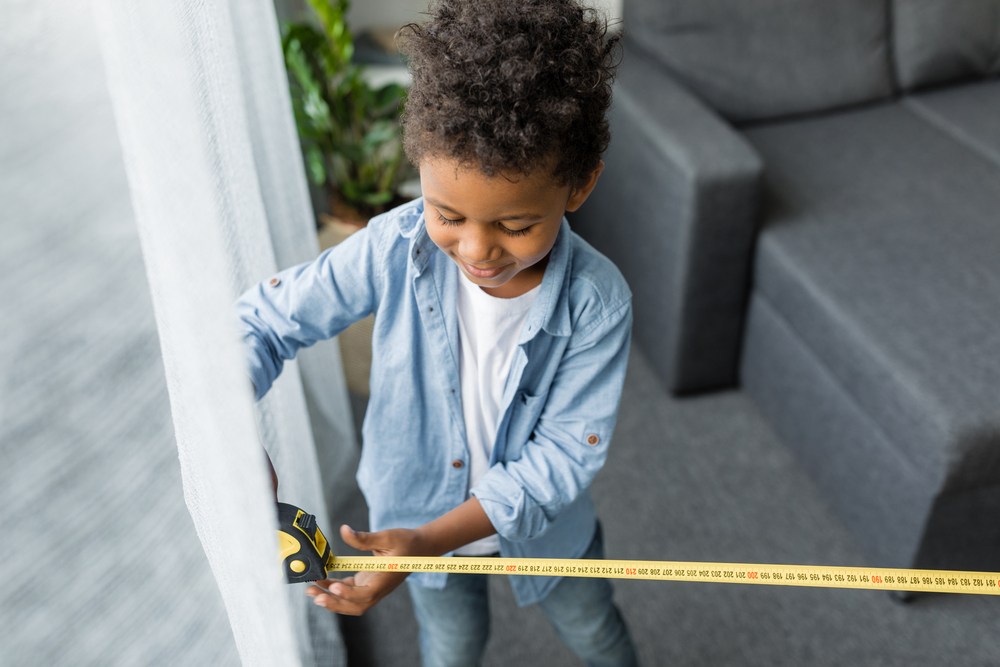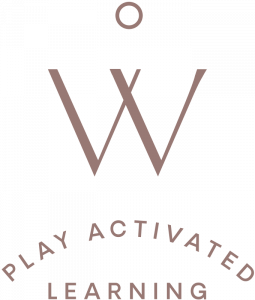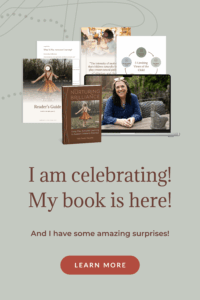For children, inquiry – their quest to understand how the world works – takes place through play (and we know that playful adults also make new discoveries and become innovators when they too experiment with materials, alternate ways of thinking, and new approaches!)
When we truly value play as learning, we do not need to lead it or control it. What we can do is to set up optimum conditions – time, space, and materials – for deep play ideas to unfold, and then watch, reflect, wonder, and respond.
Through play, with observant and responsive educators present, we see children’s ideas unfold, the process of trial and error, challenges that naturally arise, and the strategies children use to solve them. This is inquiry. This is research in action.
What does inquiry look like?
In an early years classroom, during play, we might see a small group of children figuring out how to make orange juice from fresh oranges, or continuing yesterday’s investigation of where water goes when it disappears from the toilet bowl, or crushing cocao beans because they are wondering how chocolate is made.
All of these examples come from my own previous classrooms, where children’s questions and wonderings were taken up by a responsive team, and children were given the time and opportunity to construct their own understandings through play -interacting with materials and each other as they ‘messed about’ and reached their own understandings.
For our youngest children, the process of inquiry is no different. Infants and toddlers may not have the verbal ability to pose questions just yet, but their questions exist and investigations are still taking place. Through action upon the world, they are figuring out how it works – the flow of water, perhaps, or the fascination of boxes which are capable of being so many things, or how their bodies feel when they spin around and around.
And what are teachers doing in this emergent and inquiry-based setting?
When educators make brief notes while with the children, when they pay attention to ideas and strategies rather than only skills, then there is the opportunity to think deeply about what the children are doing in their play, and how to respond to that. This is a form of inquiry for the teachers themselves.
The following graphic (Stacey, 2019) shows the Cycle of Inquiry as it relates to both children and adults in an inquiry-based, emergent programme. We see in this graphic the repeating cycle of observation, reflection and response on the part of the teacher, and the child’s input throughout:
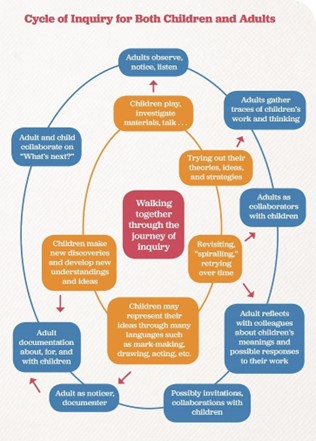
Inquiry has the potential to be a ‘messy’ practice…in a good way! For children, they will need their hands on materials and their minds on ideas to mess about with, make mistakes, revisit, and repeat many times. For the adult, the process is pretty much the same. We should know the attributes of materials and experiment with them ourselves, perhaps during professional learning events, so that we are aware of their potentials.
In our thinking, which might also feel a little messy at first if we are in unfamiliar territory, we can expect to sometimes be a little unsure, to take a step forward without really knowing where it will lead us. Over time, we learn to trust the process of inquiry and be comfortable with this disequilibrium.
What we think may be an appropriate response to what children are doing (for example, providing more materials, or engaging in dialogue, or venturing into the community to explore further) may not be received by the children as we had hoped. Then we must let go, and rethink our understandings.
We can use our stumbles to dig deeper and learn more about the children’s ideas; we can revisit, think again, engage in dialogue with our peers, and repeat.
This ‘trying again’ is an important part of research and learning.
Teacher as Researcher
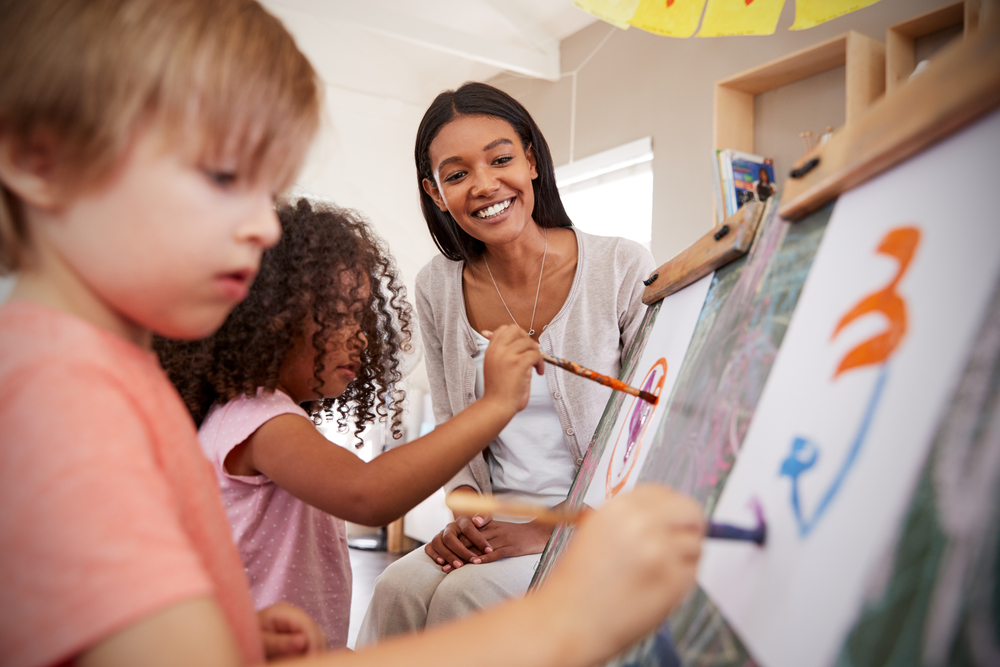
Inquiry-based, emergent programmes put us in the role of researcher. Often, the word ‘research’ conjures up thoughts of ‘hard science,’ using hypothesis, experimentation, data, and analysis.
Action research, within our classrooms, happens quite naturally if we consider the children’s work with an open-mind and a willingness to learn.
We might have an idea of what’s happening in their play (a hypothesis), but this can be put on hold as we watch further, listen closely, and see what unfolds. Again, we come back to the issue of time…in this case, time to pause and reflect.
The children themselves are the ultimate experimenters within their play.
Yet we can experiment too – with our routines, our documentation processes, the ways in which we engage in dialogue with our peers and make decisions. Our documentation – photographs, notes, sketches – becomes our data, the information with which we can respond to children and have meaningful dialogues with them or provide materials or experiences. It also allows us, when we examine our notes and reflect together, to revisit what has happened in play and sometimes – not always – reach an understanding of children’s meanings and ideas.
Action research also involves a curious mind on the teacher’s part. We must learn to ask ourselves questions about what is going on. Not only ‘what are they learning?’ but more along the lines of ‘what is their big idea?’ ‘What are they thinking about?’ ‘What are the children finding so engaging about this, and why?’
Learning in the traditional sense (i.e. about language, numeracy, science concepts and so on) will always take place within play. It is usually easy to see. Yet I often advise educators to watch for the other major developments taking place – the process of having an idea and playing it out, their approach to something new or unexpected or challenging, negotiating with others who want to join them in ‘finding out about stuff,’ and communicating through the 100 languages of art, play, dance, sculpting, music and a myriad of other forms.
The role of the environment
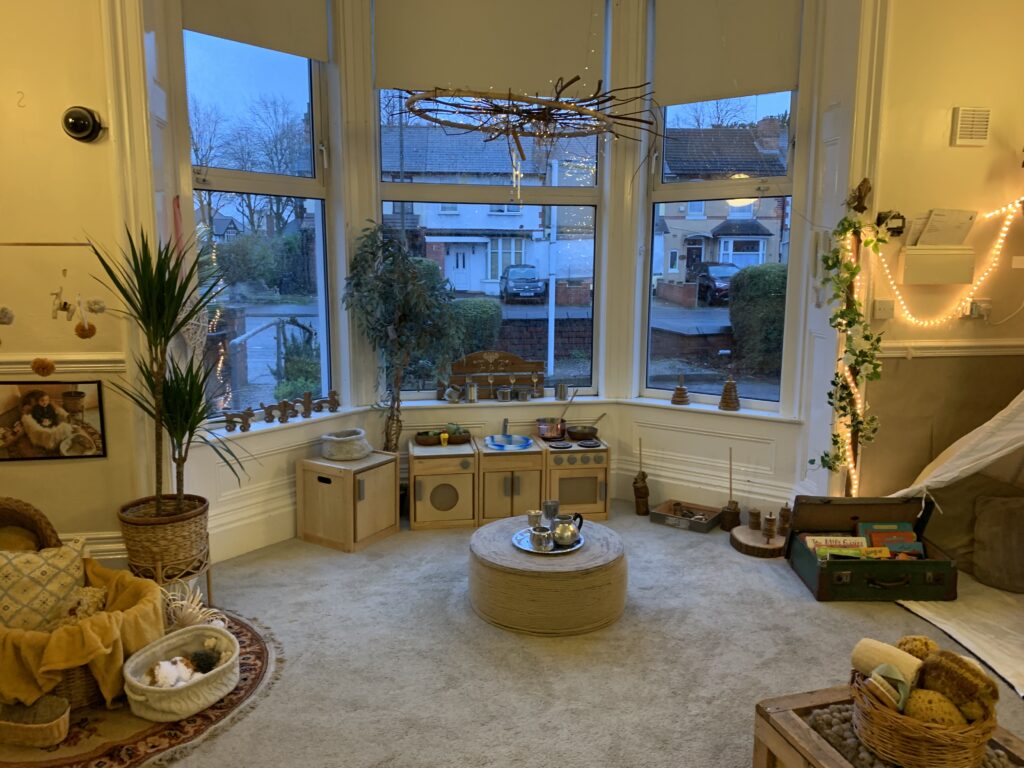
In a well-provisioned environment, full of interesting materials, children will naturally explore. The materials do not need to be expensive.
Loose parts, interesting bits and pieces, materials from the natural world, art materials with which to make marks and representations, all contribute to a rich environment that invites exploration and experimentation.
When materials are provided that respond to the children’s lives, cultures, and ideas, they become even more inviting and meaningful.
Yet, deep exploration of materials and ideas cannot evolve without time. Time is also a part of our environment, and we cannot underestimate time’s influence. When children are in a setting with rigid routines and timelines, inquiry is often interrupted, and the flow of children’s ideas is lost.
We need to ask ourselves: What is more important at the moment? To go outside ‘on time,’ or to give time to the children to explore their big play idea? To stop everything when the children are in a state of flow, or to be flexible and see what happens? Will the classroom fall apart if it does not run by the clock?
Children do not have a strong concept of time; it is very much an adult construct. We surely all remember that when we were engaged in absorbing play as children, how time flew. When we were bored, it dragged. When the children in our settings are absorbed, we hear excited chatter, much action, ideas being thrown around, or the quiet hum of children trying to figure out a challenge. It is a disservice to them to interrupt this.
How do we make our research visible? The role of Pedagogical Documentation
When you are walking alongside children on the journey of inquiry, it is well worth sharing!
Documentation, in its many forms, makes that sharing possible, and makes everyone’s thinking visible. When we dig deeper than simply telling the story of what happened, and include our thinking about what the event might mean for the children, what we are curious about, and the educators’ questions and wonderings, then the documentation becomes pedagogical – that is, a process that we can learn from.
How this unfolds, and all the ways it can be used, is the topic of another article (and one of my books!) but suffice to say that documentation will support your thinking as a researcher through reflection and dialogue with your colleagues. And, those who read it, including your families, will understand not only the ‘what’ of your programme, but also ‘the why and the how.’
Everything in Relationship – emergent curriculum, inquiry, research, curiosity, the environment, pedagogical documentation
If we think of play as an all-encompassing circle, then we can visualize all that occurs within it, and how all of these facets are intertwined – they are all in relationship.
While the ideas within this article may appear complex, it really all comes back to the Cycle of Inquiry, embedded within play:
A curious and attentive educator watches and listens to the children at play, after setting up a rich environment full of possibilities. S/he makes notes and takes photographs for future reference. The educator is sometimes in conversation with the children, responding to them and attempting to understand their thinking, but without interfering with their play.
In order to make decisions, s/he reflects with colleagues, using their notes and photographs, and being open to possible ways forward. The children’s ideas are honoured, and if there are unexpected theories or understandings from the children, these are joyfully embraced and there is the chance for them to explore further and longer within their play.
Learning is therefore co-constructed. It is a collaboration between children, educators, and the environment. Documentation makes this process visible, and valued.
As you engage in this journey of inquiry with children, I wish you an exciting voyage full of possibilities, and the openness to embrace them. But most of all, I wish for you the disposition of curiosity – the ability to wonder and to wander alongside children.
References
Hamlin, Maria; Wisneski, Debora B. (2012). Supporting the Scientific Thinking and Inquiry of Toddlers and Preschoolers through Play. Young Children, v67 n3 p82-88 May 2012. National Association for the Education of Young Children.
Murdoch, Kath (2015). The Power of Inquiry: Teaching and Learning with Curiosity, Creativity and Purpose in the Contemporary Classroom. Seastar Education.
Stacey, Susan (2018). Emergent Curriculum in Early Childhood Settings: From Theory to Practice. Redleaf Press.
Stacey, Susan (2019). Inquiry-Based Early Learning Environments: Creating, Supporting, and Collaborating. Saint Paul, MN: Redleaf Press.
